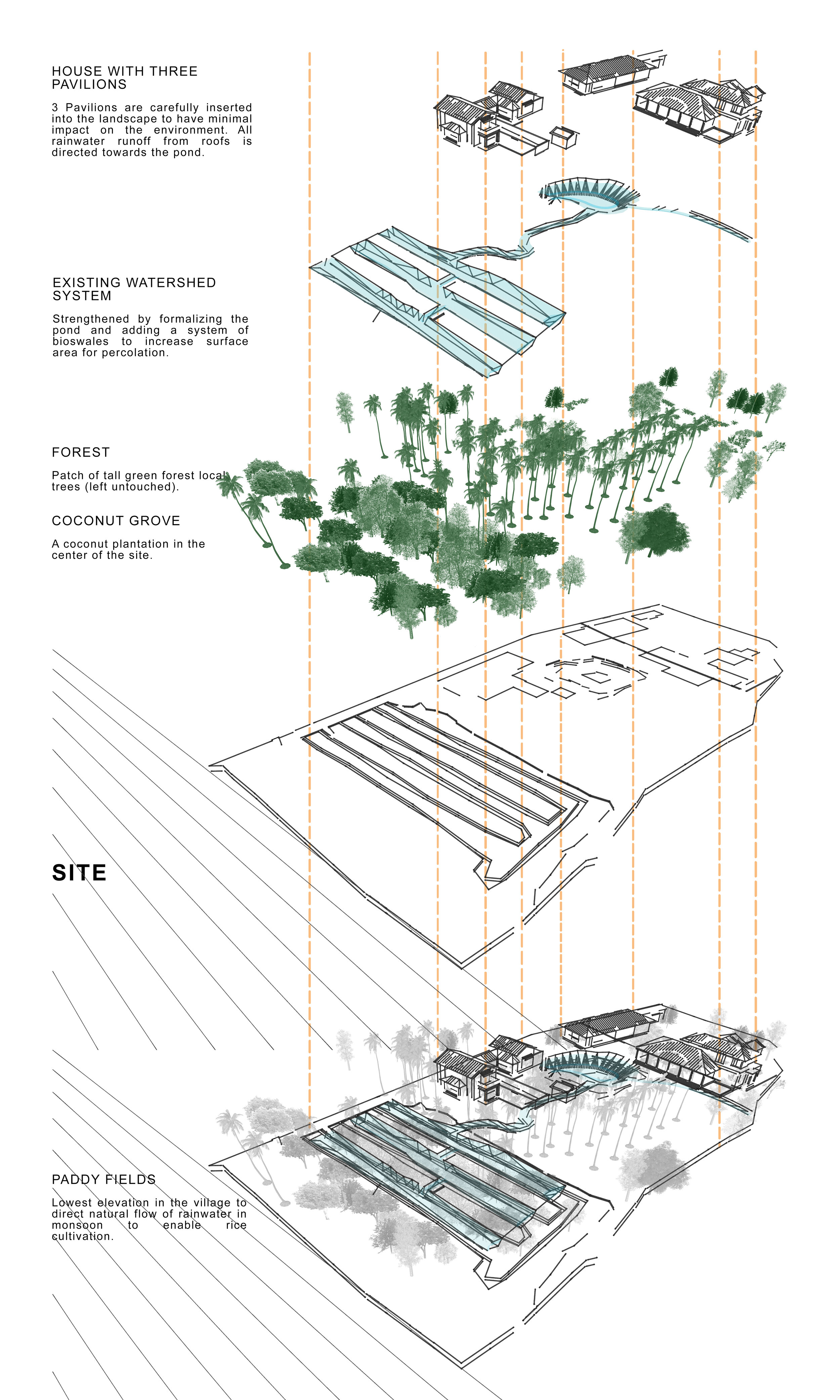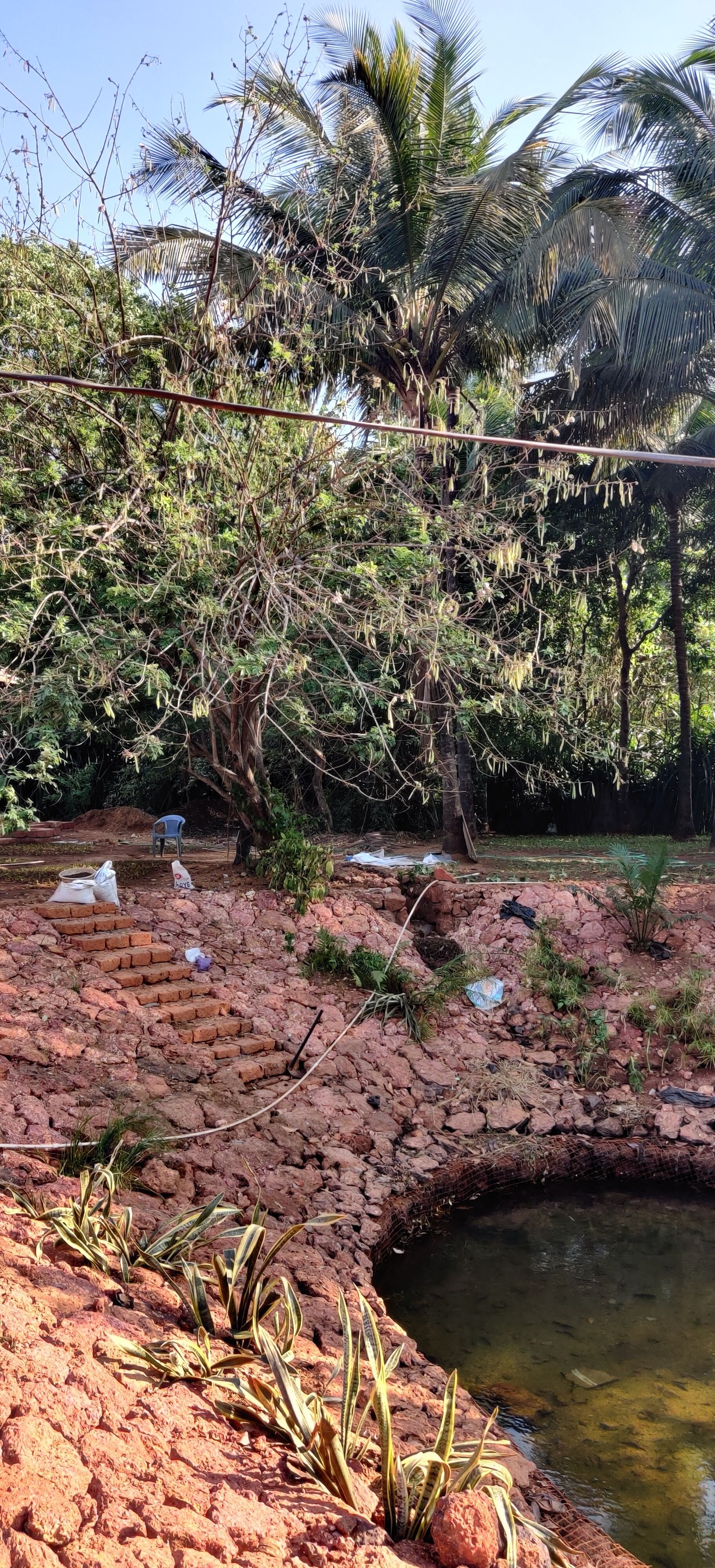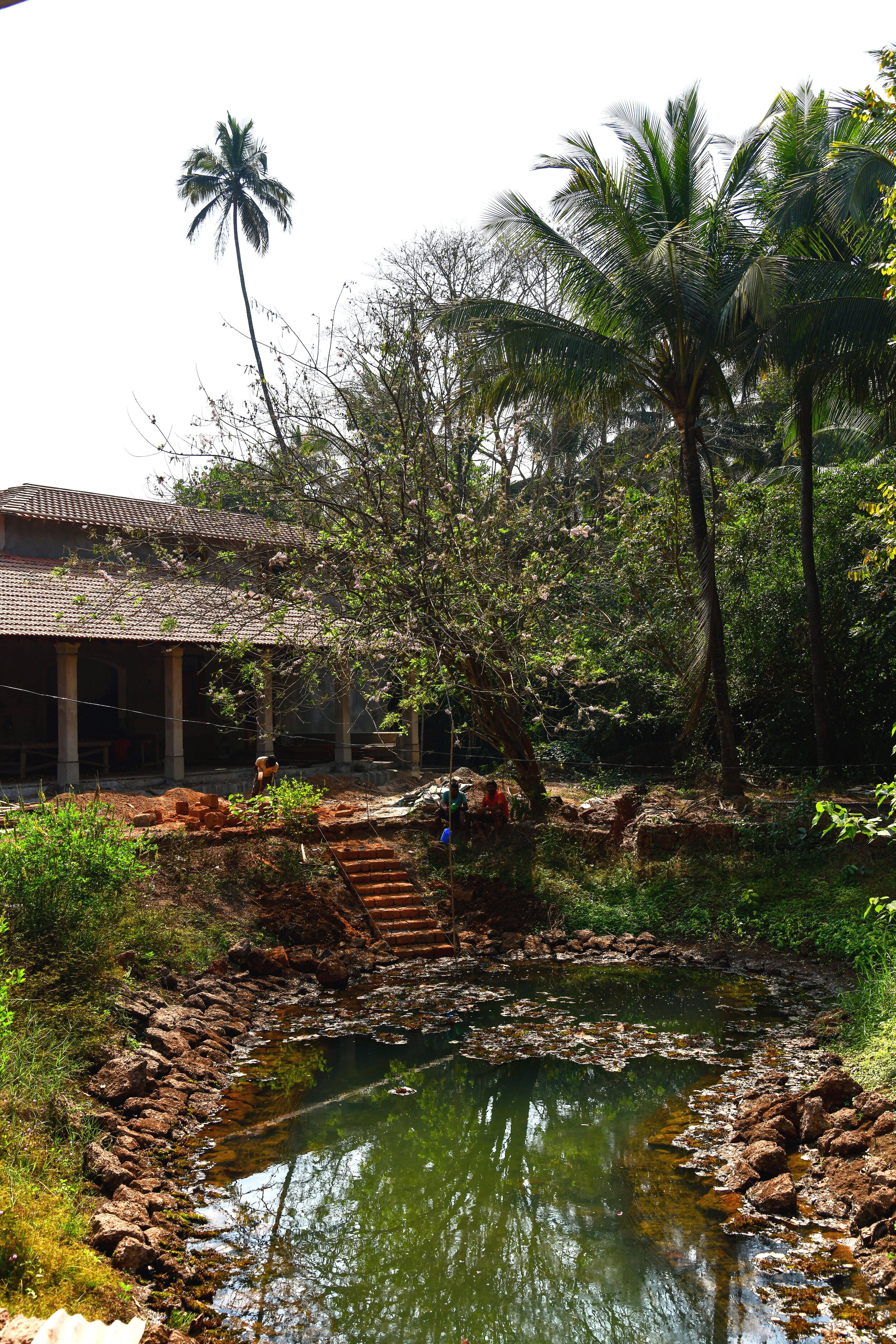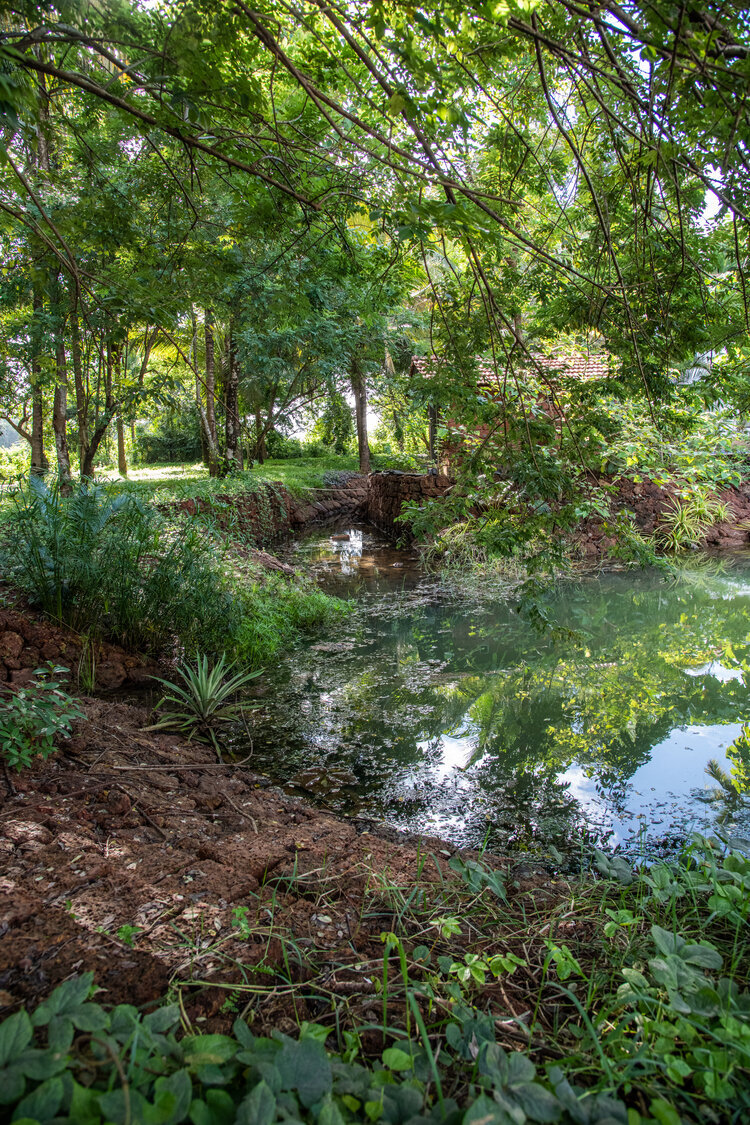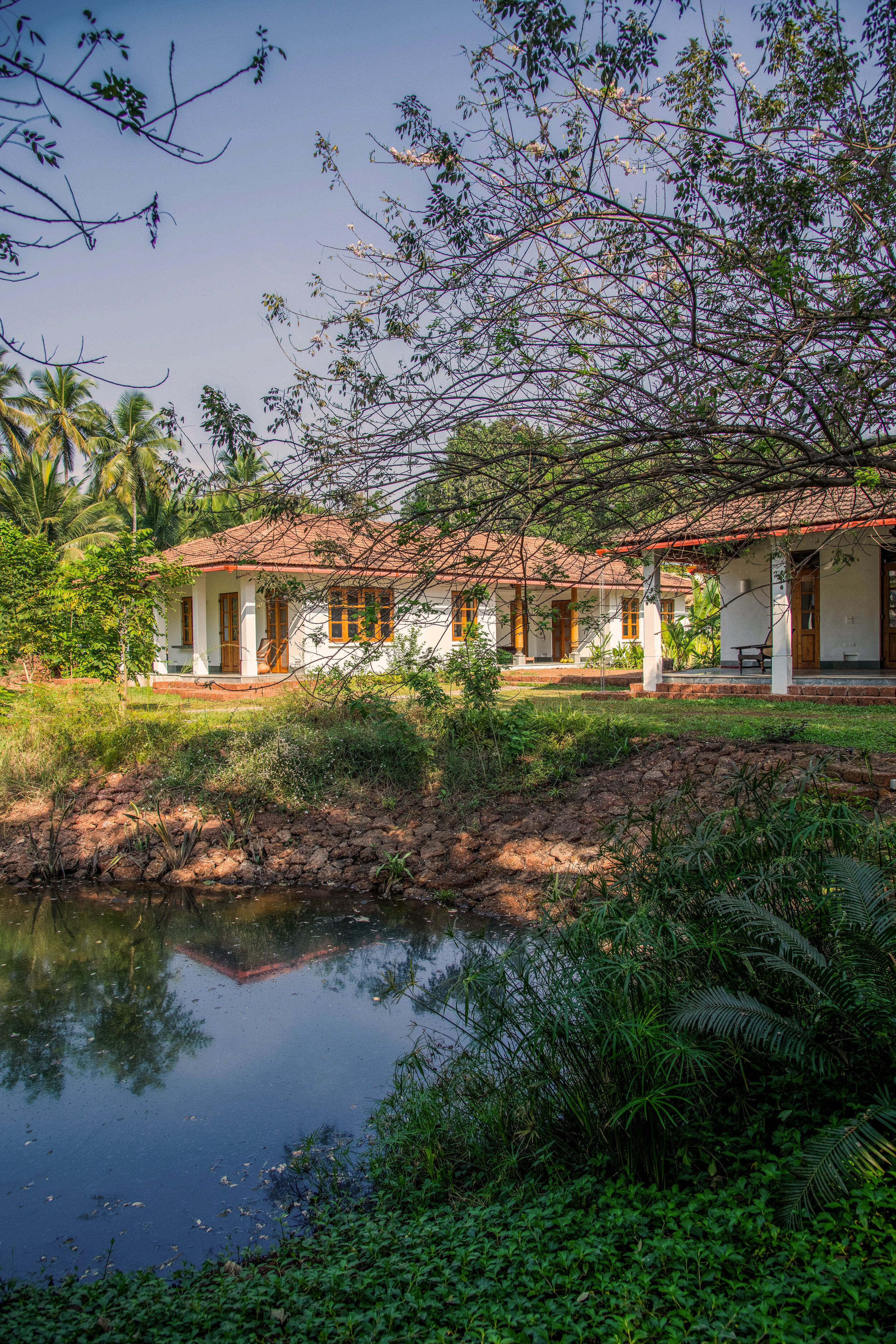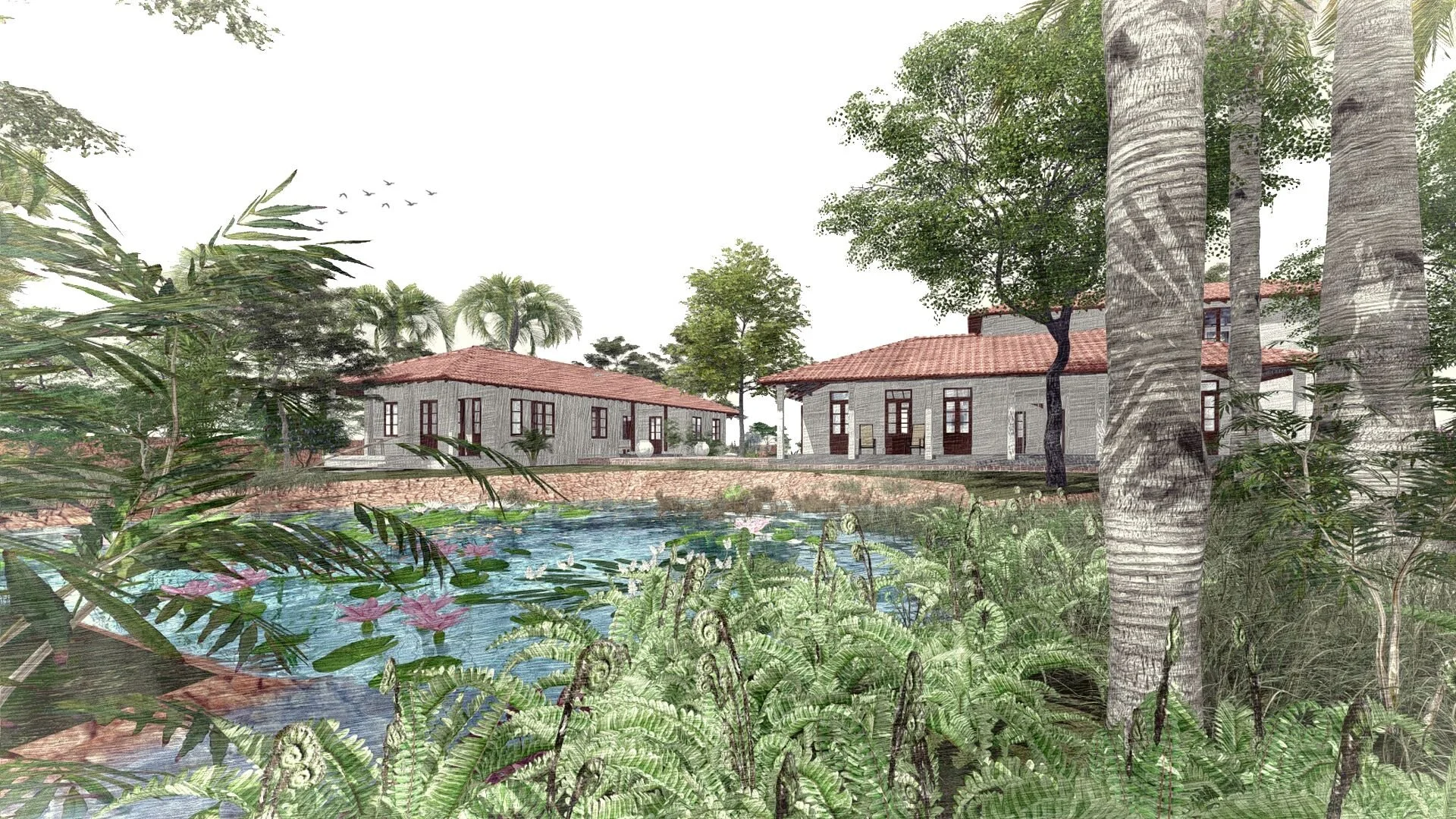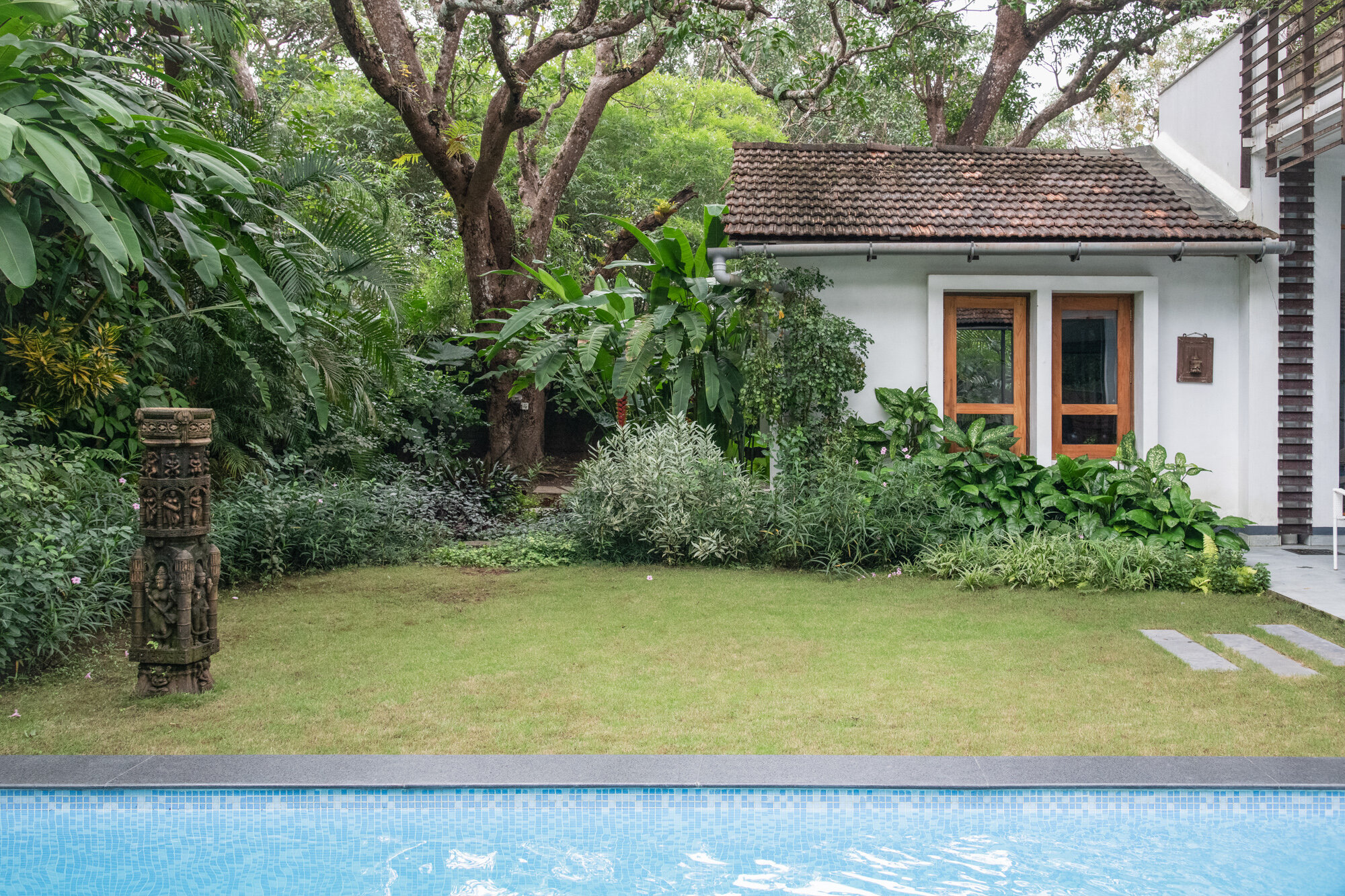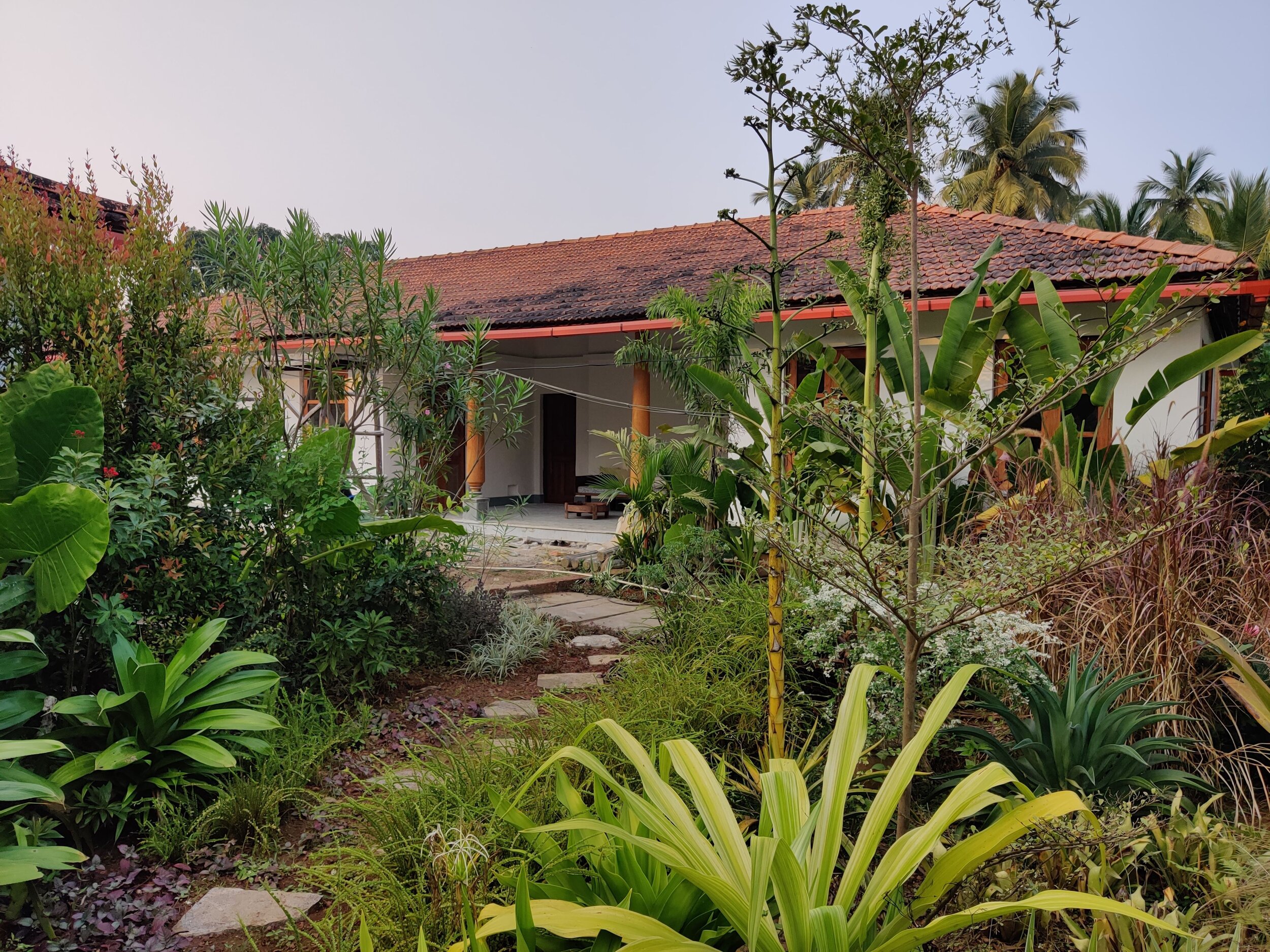A Site Positive Approach - House with Three Pavilions
How does one build in a rural location with the objective to have minimal or zero-impact on the environment?
This question is the primary driver behind the site planning strategy for The House with Three Pavilions located in Goa, India.
The project site is located on the edge of rice paddy fields with a dense cluster of local forest trees on one side and a coconut grove in the middle. The following diagram illustrates some of the critical measures taken as part of the site planning strategy.
WHY IS AN ECOLOGICAL RESPONSE ADOPTED?
As Goa gentrifies, rampant new construction threatens to rock the delicate balance between nature and man. This project is our attempt to showcase that the built form can tread lightly on the land with conscious design and measured planning.
The design focus is to leave a minimal or zero-impact on the functioning natural ecological cycles at the site that pre-date the new construction.
The site is geographically located along the path of the watershed from surrounding higher elevations that finally drains into the Arabian Sea. The design planning is oriented to support and improve the water movement through a comprehensive water management plan.
The water management plan is implemented to address three primary concerns around the site - to recharge the depleted underground water table, to increase water availability for the paddy fields bordering the site, and to reduce the water load on the Municipal Draining system.
WHAT HAS BEEN DONE?
During the survey, a natural depression was found at the center of the site with a perennial wetland hosting diverse flora and fauna. This existing depression was dug out (until the underground water level in the driest month) and integrated with the existing well on the site. Today, this natural wetland feature is preserved and developed into a seasonal waterbody which also forms the focal point for the landscape created using a native planting strategy.
All the roof rain water runoff is captured and along with the site surface runoff, it is directed into the central seasonal pond for rain water harvesting. The edges of the pond were formalized with mortar-less retaining walls built in local laterite rubble. This was done to reduce the erosion of the pond edges and to retain the water as a permanent feature in the landscape
The pond was further connected to a newly planned system of bioswales that spread the collected runoff water over a larger site surface area increasing the rate and extent of percolation on the site. This keeps the level of our underground water table high throughout the year and the soil moist, reducing the garden irrigation requirement in the dry season.
The bioswales use no cement in their construction and can absorb water through the walls and the base. The construction of the bioswales and the pond without cement, also allows for the water to remain clean without any toxicity of the cement leaching into the landscape.
HOW DOES THIS CREATE A POSITIVE IMPACT?
The water management was a critical part of this project and offsets the load on the rudimentary public storm water systems found in the Goan villages especially during the heavy monsoons.
As a result of our efforts, the underground water levels have been improved hence negating the impact of the house construction on the environment. We have been able to prevent any additional flooding at the neighboring fields or any other low-lying area in the village.
The project also prioritises the enhancement of the site’s resources and biodiversity. In doing so, it also creates a positive impact on its surroundings by protecting the agrarian viability which is constantly threatened by new construction and increased human activity. Our success can be measured by the number of birds, reptiles, butterflies and insects that can be found on the site today. We have uncovered peacock eggs, cuckoo eggs and baby parrots on our site. It is a win to see that the animals continue to find the site a safe space even as they come in close contact with the human life around, making this truly a space for all seasons and species.
(Water Management Plan in consultation with Pallavi Latkar and team at Grassroots Research Mumbai.)



